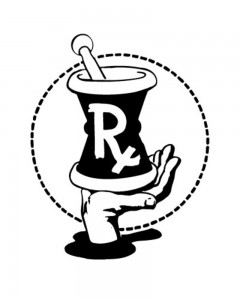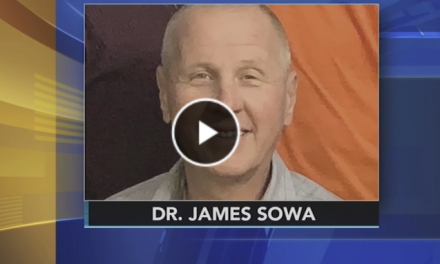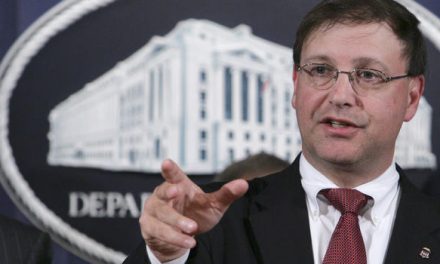Each year, tens of thousands of people are hospitalized due to dangerous drug combinations, showing yet another flaw in our healthcare system. Doctors don’t always know what other doctors have prescribed, and pharmacists- the last line of defense- are working so quickly to keep up with expectations and demands that they are missing the problems. Sometimes with deadly outcomes.
From the article:
“In the largest and most comprehensive study of its kind, the Chicago Tribune tested 255 pharmacies to see how often stores would dispense dangerous drug pairs without warning patients. Fifty-two percent of the pharmacies sold the medications without mentioning the potential interaction, striking evidence of an industrywide failure that places millions of consumers at risk.
The largest pharmacy retailer by store count, CVS, had the highest failure rate of any chain dispensing the meds with no warning, 63 percent of the time. Walgreens had the lowest failure rate at 30 percent.
The newspaper also tested independent pharmacies. As a group, their failure rate was higher than any retail chain as they missed dangerous drug interactions 72 percent of the time.
Wal-Mart failed 43 percent of its tests and Kmart failed 60 percent of the tests.
Costco failed 60 percent of the tests and two Chicago-area chains, Jewel-Osco and Mariano’s failed 43 percent of the time and 37 percent, respectively.
All in all- not great. As you can imagine, everyone promised to do a better job and take a look at their processes. And that’s all great but how is this happening?
According to the Tribune, in test after test, the pharmacists flew through their tasks paying little attention to customers and failing to catch combinations that could trigger a stroke, result in kidney failure, deprive the body of oxygen or lead to unexpected pregnancy with a risk of birth defects.
Also, the location of the pharmacy didn’t matter. There were failures in poor neighborhoods as well as in affluent suburbs. The article reports that even the Walgreens at Northwestern Memorial Hospital in downtown Chicago failed its test!
Pharmacists are the last line of defense
 As doctors are the ones who write the prescriptions they should at least understand drug interactions. However, their knowledge on that subject is often poor.
As doctors are the ones who write the prescriptions they should at least understand drug interactions. However, their knowledge on that subject is often poor.
So, when filling prescriptions, pharmacists are uniquely positioned to detect potential drug interactions, warn patients, and prevent harm. Even pharmacists will tell you that this is one of their primary duties. And yet there is very little data about how they perform their duties in real-world situations.
More from the article:
“The Tribune set out to find the answer. To select drug pairs to be used in the tests, the newspaper enlisted the help of two leading experts on drug interactions: pharmacy professors Daniel Malone of the University of Arizona and John Horn of the University of Washington. Five pairs were chosen, three of which posed life-threatening risks. Another could cause patients to pass out. A fifth included an oral contraceptive and could lead to unplanned pregnancies.”
The experts chose the specific drugs because they had been on the market for years and the pairs also presented well-established interactions that pharmacists could easily catch.
The doctor wrote the prescriptions in the names of 18 Tribune journalists, 15 of whom conducted tests in the field. They presented the prescriptions at certain pharmacies, testing 30 stores at each of seven leading chains as well as numerous independent pharmacies. Most stores were in the Chicago area; some were in Indiana, Wisconsin, and Michigan.
The reporters presented their prescriptions together or a couple of days apart and then waited to see if the orders would be filled. For the study, the test was considered a pass if the pharmacist attempted to contact the doctor or patient (reporter) about the drug interaction.
The issue with speed
The Tribune study found that pharmacists often race through legally required drug safety reviews or skip them altogether. However, given that pharmacists are filling 200- 6prescriptionsons a day, it’s little wonder they made short-cuts.
Bob Stout, president of the New Hampshire Board of Pharmacy said, “They’re cutting corners where they think they can cut.” When they sampled data from two retail chains in their state, he found that pharmacists spent an average of 80 seconds on safety checks for each prescription filled.
While most pharmacies use computer software designed to flag drug interactions, alerts are so common that pharmacists get “alert fatigue” and ignore many of the warnings.
So, when they speed up their process to make customers and bosses happy, it sends a message that speed is more important than quality health care.
From the Tribune:
“In 2013, the National Association of Boards of Pharmacy called on states to prohibit, restrict or regulate company policies that measure the speed of pharmacists’ work. But, the association says, little has changed in state law.”
In response to the Tribune test and their scores, some of the nation’s largest pharmacy chains said they would take significant steps to improve patient safety. We hope so.
Source: Chicago Tribune












